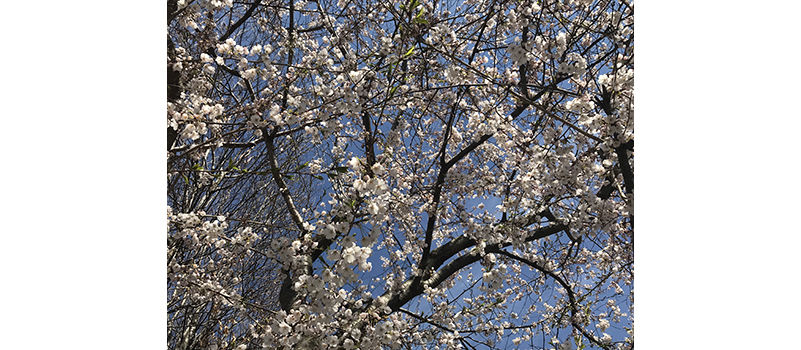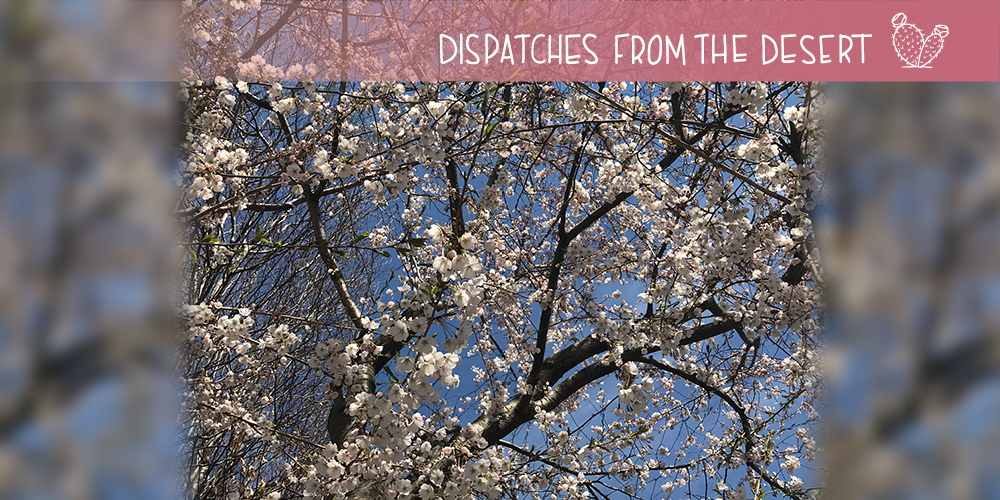13 April 2020
Castle Valley, Utah
eople are dreaming again,” says Dr. Susan Pollak, a clinical psychologist at the Harvard Medical School. We are neighbors in Cambridge. We checked in with each other yesterday. She shared with me a photograph of her cherry tree that presides over her garden. I sent her a picture of a red rock mountainside with a stone figure that resembled a person praying.
When I asked Susan why we are dreaming again she said, “Our routine has been broken. We now have more time to reflect on our lives and listen again, rather than run from meeting to meeting, or race to another activity surrendering to a life of motion and distraction.”
Her Harvard colleague Deirdre Leigh Barrett, Ph.D., author of “The Committee of Sleep: How Artists, Scientists, and Athletes Use Their Dreams for Creative Problem Solving — and How You Can Too,” agrees. “People are remembering more vivid dreams while in quarantine,” she explained to the Los Angeles Times on April 7, 2020.
“Dream recall is very correlated with how many hours of sleep you get, and most of America runs around pretty sleep-deprived,” Barrett explains, adding “that if you’ve been sleep-deprived and are only now catching up on sleep, you may be experiencing more intense dreams.” She is collecting “coronavirus dreams” and they include a lot of bugs, monsters, and strange apparitions.
This has certainly been my experience in the last month and my vivid dream life isn’t letting up. Not long ago, I dreamed I was on a bus with a multitude of people in Salt Lake City. I looked to the west and noted Kennecott Copper Mine. Nearby, the town of Magna lit up. All at once, the bus started shaking and someone yelled, “Earthquake.”
I awoke to the telephone.
“Did you feel the earthquake?” It was my brother Hank. I paused — was I awake or still dreaming?
“Are you there?” He asked.
“Yes, I’m here.” I answered.
“It was 5.7, freaky, I was sitting on the couch, it turned into a swing. They say the epicenter was at Magna.”
“Are you okay?” I asked. “Any damage?”
“No, I’m fine, it’s just too weird to have an earthquake in the middle of a pandemic, what’s next, locusts?”
I don’t remember the rest of our conversation, only the unease of not being able to distinguish my dreaming life from the life we were living. I did have that dream and there was an earthquake and it feels as if our individual dreams are now part of the collective mind we are inhabiting right now.
“Dreams are like letters from God. Isn't it time you answered your mail?” writes Marie-Louise von Franz, author of “The Way of the Dream.” My grandmother answered her mail by enrolling my cousin and me in a film series featuring Marie-Louise von Franz at the University of Utah. It must have been in the early 1970’s. Before she picked us up, she told us to wear our nightgowns. Sitting in the dark theater, Ms. von Franz’s high-pitched voice entered my bloodstream. I still remember her charge that went something like this: “You are in charge of your dreaming life. Speak to your psyche before you go to bed. Tell it what you need, what kind of dream you are interested in receiving. If you need some guidance in your life, ask for a dream to help you.”
I’ve taken this message to heart. Almost every night, I say to my psyche, “Give me a dream to understand where I am" or “Can you help me with this problem?” and I ask for my night mind to instruct me while I am asleep. In the morning before I am fully awake, I listen to what information comes into my mind, or I pause to gather the images of the dreams I had and with my eyes still closed, I reach for my dream journal and scribble with a small pencil what I can retrieve before I lose it once I get up. It’s a practice that serves my waking life, alongside my creative life.
My dreams of late are all about crowds of people, large colorful gatherings, foreign locations with people coming together asking questions in different languages. It’s hard for me to grasp what is happening. And then, I lose the details and am left with a feeling of uncertainty. In the solitude of living in the desert where the only human beings I have seen in over a month are my husband and brother, these dreams of multitudes feel compensatory to my isolation and true to form of my incapacity to take in all that is happening with over 2 million people now infected worldwide with COVID-19.
I wonder if frontline health care workers, doctors, nurses and patients are dreaming now, as well? Or if their exhaustion and the truth of what they are seeing and experiencing, this ongoing nightmare in every hospital established as “a hot zone,” keeps them from sleeping at all?
And I also wonder in this pause on the planet if the Earth, herself, is dreaming alongside us? Thomas Berry, a geologian writes in “The Dreaming of the Earth:”
We must, however, reflect on what is happening. It is an urgent matter, especially for those of us who still live in a meaningful, even a numinous, earth community. We have not spoken. Nor even have we seen clearly what is happening. The issue goes far beyond economics, or commerce, or poetics, or an evening of pleasantries as we look out over a scenic view. Something is happening beyond all this. We are losing splendid and intimate modes of divine presence. We are, perhaps, losing ourselves.
Are we? Or in this collective home stay for most of us, are we finding out who we are in a new way. Are we dreaming a different life for ourselves, one less crowded with doing and more fulfilling with being? Can we dream together a different relationship with the places we call home? And are we capable of thinking more about the state of the Earth than the state of America’s financial interests?
Last night, I dreamed about the cherry tree in Susan’s garden arching over a community of people, some I knew, most I did not. We were waiting to see who tested positive and who tested negative. We were all sitting close together and it was clear if one person had the virus, we all did. I remember looking up at the blue sky through the blossoms. It is the only detail I remember. I don’t know what this would mean in a Jungian sense or a Freudian one, but for me personally, the cherry blossoms speak to the ephemeral nature of life – to the sustained beauty of what appears each spring, if only for a few days. And that each one of us is a blossom short-lived and beautiful.

I experienced that dream of cherry blossoms as something real when I visited Japan on the 50th anniversary of Hiroshima. Shoko Itoh, a professor in American Literature and Culture at Hiroshima University, accompanied me. What I remember is this: We walked arm in arm with cherry trees in full bloom on either side of us. Looking upward, the blossoms were pink and delicate attached to thin black branches swaying in the breeze. It was like a dream. All at once, a strong wind blew through the lane of cherry trees creating a blizzard of petals. It was a moment of unspeakable joy on the outskirts of the Hiroshima Peace Memorial Park, the first city in the world to suffer a nuclear attack on August 6, 1945, when the United States dropped an atomic bomb that essentially ended World War II.
Cherry blossoms are something we have come to count on in the aftermath of war or in the middle of a pandemic or spring in our nation’s capital. We are dreaming again. A greening of the world will follow.
Terry Tempest Williams
Mark your calendars for February 1, 2024! The Resiliency Center and the Center for Health Ethics, Arts, and Humanities are gearing up for the sixth Healthcare Stories event at Kingsbury Hall. This year's captivating theme, "Promise," invites healthcare professionals, patients, and community members to explore futures imagined, unexpected journeys, and transformative relationships.
University of Utah Black Cultural Center’s Meligha Garfield and Sara Cody share insights on celebrating Juneteenth respectfully and emphasize the importance of understanding its history to avoid misappropriation.
